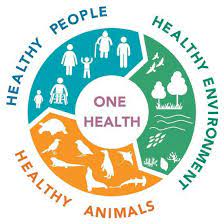Embracing One World, One Health: Combating Zoonoses for Global Wellness
Introduction
The concept of “One World, One Health” highlights the interdependence of human, animal, and environmental health and stresses the importance of a unified approach to prevent and control zoonotic diseases. Zoonoses, which are infectious diseases transmitted from animals to humans, present significant public health risks. This article explores the One Health approach and its role in preventing zoonotic diseases, drawing on credible sources.
The Unified One World, One Health Approach
The One Health approach recognizes the intricate links between human, animal, and environmental health. It emphasizes the need for collaboration among diverse fields such as veterinary medicine, human medicine, ecology, and environmental science to tackle health challenges comprehensively.
Preventing Zoonotic Diseases
- Strengthening Surveillance (Reference: CDC)
Vigilant surveillance is crucial in detecting and monitoring zoonotic diseases. The Centers for Disease Control and Prevention (CDC) plays a pivotal role in tracking outbreaks, investigating emerging zoonotic diseases, and providing early warnings to prevent their spread.
- Enhancing Veterinary Public Health (Reference: FAO)
The Food and Agriculture Organization (FAO) advocates for veterinary public health to control zoonotic diseases at the animal-human interface. Implementing effective animal health programs and biosecurity measures helps avert disease transmission from animals to humans.
- Prompt Detection and Swift Response (Reference: WHO)
The World Health Organization (WHO) underscores the significance of early detection and rapid response to zoonotic outbreaks. Timely identification and containment are critical in averting pandemics.
- Promoting Responsible Use of Antimicrobials (Reference: OIE)
The World Organization for Animal Health (OIE) promotes the responsible use of antimicrobials in animals to curb the development and spread of antimicrobial resistance, which can impact both animal and human health.
- Fostering Global Collaboration (Reference: One Health Commission)
The One Health Commission fosters international collaboration among human, animal, and environmental health sectors. Global cooperation is vital in sharing information, resources, and expertise to effectively address zoonotic diseases.
Examples of Successful One Health Initiatives
- Eradication of Rinderpest (Reference: FAO)
The concerted efforts of veterinary and human health professionals led to the eradication of rinderpest, a viral disease affecting cattle. This accomplishment demonstrates the efficacy of the One Health approach.
- Control of Avian Influenza (Reference – CDC)
The One Health approach played a pivotal role in containing avian influenza outbreaks. The collaboration between veterinary and human health authorities effectively thwarted the transmission of the disease to humans.
It concluded that Embracing the One World, One Health approach is fundamental in preventing zoonotic diseases and safeguarding global wellness. Through interdisciplinary collaboration, early detection, and responsible practices, we can proactively address emerging health threats. Governments, organizations, and individuals must work cohesively to build a resilient and interconnected global health system.
References:
- Centers for Disease Control and Prevention (CDC)
- Food and Agriculture Organization (FAO)
- One Health Commission
- World Health Organization (WHO)
- World Organization for Animal Health (OIE)
Submitted by – Pramod Yadav



